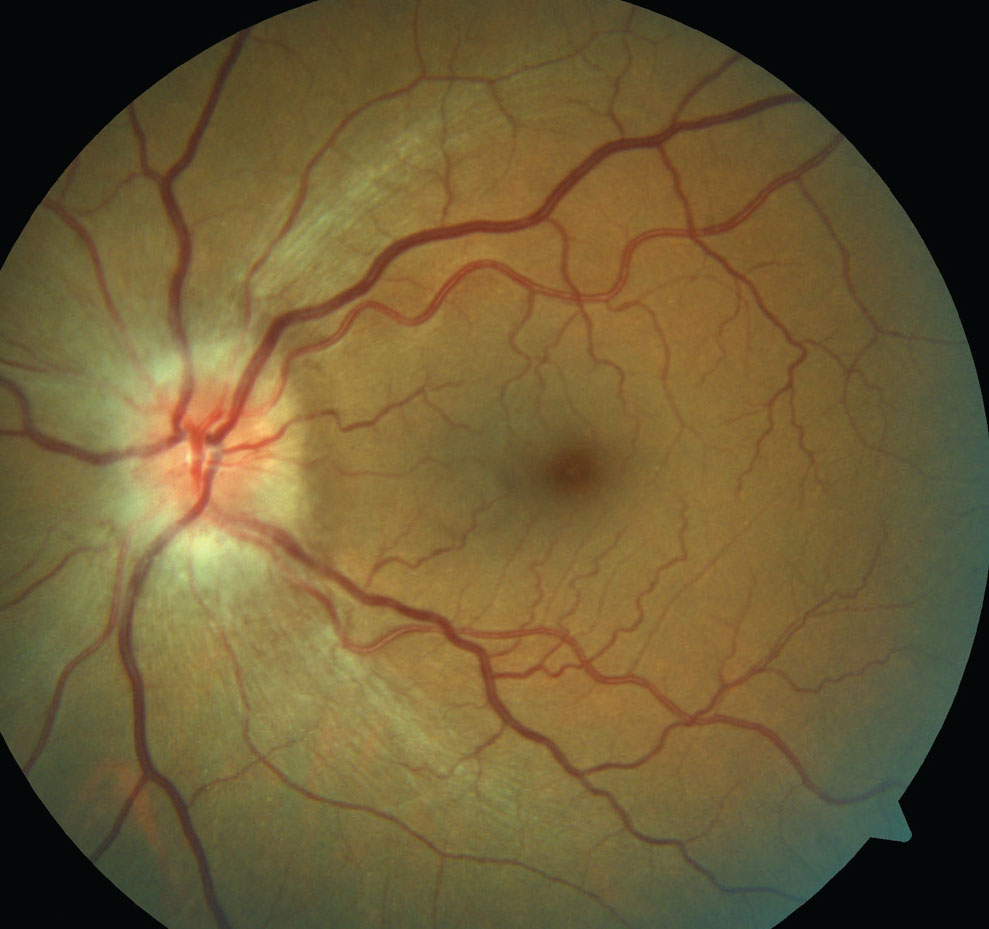Prior studies have shown that non-arteritic anterior ischemic optic neuropathy (NAION) is less common in Black individuals compared to those of other races, but the reasons why are unknown. In a new study published in American Journal of Ophthalmology, researchers analyzed the systemic and ocular features of Black NAION patients compared to white patients and found the majority of the former had a smaller cup-to-disc ratio, comparatively speaking.
 |
|
Aside from a greater prevalence of kidney disease among Black patients diagnosed with NAION, most other key clinical findings were similar to those of Caucasian individuals with the condition. Photo: Michael Trottini, OD, and Candice Tolud, OD. Click image to enlarge. |
Self-reported race was collected from all NAION patients seen between 2014 and 2022 from a single United States neuro-ophthalmology service (at Emory University in Atlanta). All Black NAION patients (32 cases) and a randomly selected sample of white individuals (69 cases) were included. Information on the presence or absence of the following were collected: hypertension, hyperlipidemia, diabetes mellitus, hypothyroidism, obesity, ischemic heart disease, atrial fibrillation, pacemaker insertion, chronic kidney disease, dialysis, anemia, obstructive sleep apnea, deep vein thrombosis, stroke, use of phosphodiesterase inhibitors and history of smoking. The authors reviewed fundus photos and optic nerve OCT images to assess cup-to-disc ratio and documented the presence of optic disc drusen.
Upon analysis, the researchers noted that time between NAION onset and neuro-ophthalmic examination was significantly greater in Black patients and chronic kidney disease hemodialysis was significantly more prevalent.
The results suggest that the pathogenesis of NAION is similar regardless of race, with a crowded disc responsible for a potential compartment syndrome that results in NAION. “This suggests the low prevalence of NAION among Black persons is most likely explained by their low prevalence of small cup-to-disc ratios,” the authors explained in their paper on the study for AJO. “There was, however, a referral delay to neuro-ophthalmology among Black NAION patients, due to misdiagnoses rather than reduced access to care of these patients.”
Misdiagnoses could also result in lack of referral to neuro-ophthalmology, potentially leading to an underestimation of the true prevalence of NAION among Black individuals, the authors added.
Each cohort exhibited different trends for most cardiovascular risk factors. “The high prevalence of chronic kidney disease and hemodialysis in the Black NAION patients likely reflects racial differences in chronic kidney disease,” the authors wrote. Similarly, the results regarding the prevalence of hypothyroidism among the two groups likely mirror the racial distribution of the disease.
In conclusion, despite known racial differences in cup-to-disc ratio, no difference was found between Black and white NAION patients, suggesting that the underlying proposed
compartment mechanism is the same between races.
| Click here for journal source. |
Banc A, Muntean G, Biousse V, et al. Non-arteritic anterior ischemic optic neuropathy in Black patients. Am J Ophthalmol. September 30, 2024. [Epub ahead of print.] |

